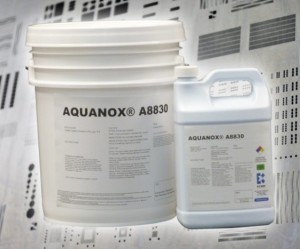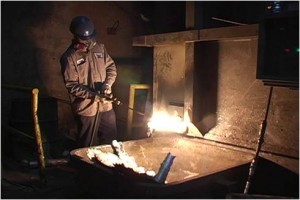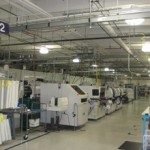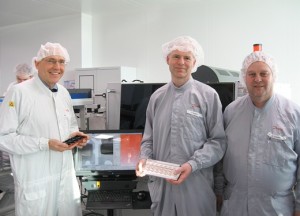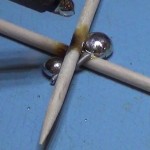By Mike Jones, MicroCare Corp.
Wipes are widely used in almost every type of organisation and industry for a huge array of cleaning tasks. In fact, wipes are so widely used it is all too easy to take them for granted and to treat them as little more than a throw-away commodity. OK, I’ll say: like Rodney Dangerfield, wipes are not given the respect they deserve.
Technicians and operators cannot do their jobs without the right tools and wipes are simply one of those tools. So, let’s explore the different types on the market. Is one wipe the same as any other wipe? Are all wipes created equal?
General Categories
 In general, there are three broad categories of wiping products. There are (a) non-woven flat wipes, (b) woven or knitted flat wipes and (c) swabs. In all cases, the cleaning surfaces are made from paper, cloth or synthetic materials. Let’s consider how to select the optimal product for a particular job.
In general, there are three broad categories of wiping products. There are (a) non-woven flat wipes, (b) woven or knitted flat wipes and (c) swabs. In all cases, the cleaning surfaces are made from paper, cloth or synthetic materials. Let’s consider how to select the optimal product for a particular job.
The best place to start is by looking at absorbency of your contamination. Then, down-select based on the cleanliness (lint and particulate) requirement. These two issues usually will define the best wipe at any given price. These numbers should be on the product spec for the wipe.
Aborbtion usually is expressed in miliilters of water (or alcohol) absorbed by one square meter of the material. But there’s a trick in that number: some wipes work well with solvents or lacquers but will not absorb water. For example, polyester is petroleum-based so polyester wipes easily are able to absorb gasoline, oils or grease. Cellulose wipes are good for water-based contamination.
Believe it or not, cleanliness of the wipe is also crucial to the end result, measured in particles per square meter. Cleanliness is inversely related to absorbency. The cleanest wipes may be less porous and unable to absorb as much, while more absorbent materials may leave fibers or residues. It’s a tough call.
Packaging also is a special factor with wipes. Most clean rooms require a special “double-packaging.” The packaging itself deserves some scrutiny, free of particulate, with no fibers, plasticizers, silicones or ionics. Another feature appreciated by engineers is static-dissipative wrapping which will not attract dust. For maximum purity, wipes and swabs must be assembled and packaged in a clean room. These work great but cost the most.
In general, fabric wipes tend to be more absorbant, stronger and durable. Although they may be more expensive to buy, they generally work out less expensive to use. Paper wipes often are found in applications where re-contamination cannot be allowed, such as electronics and medical applications.
Non-Woven Paper Wipes
 Flat wipes are generally made from either paper or fabric although a few companies make flat wipes from foam. Paper (more precisely termed “nonwoven”) products usually are single-use disposables, like paper towels in a kitchen. Fabric wipes are woven or knitted materials using a wide variety of fibers.
Flat wipes are generally made from either paper or fabric although a few companies make flat wipes from foam. Paper (more precisely termed “nonwoven”) products usually are single-use disposables, like paper towels in a kitchen. Fabric wipes are woven or knitted materials using a wide variety of fibers.
At the bottom of the wiping food chain are cheap cellulose wipes. The cheapest nonwovens, like facial tissues and kitchen towels, use glues (also called “binders”) to hold the fibers in place. Binders can be 30% of the weight of some nonwoven products. The most common binder is a water-based latex such as polyacrylate. Most binders will dissolve when exposed to solvents, so wipes made with binders are undesirable in critical applications. They will leave adhesives, lint and fibers on the surfaces being cleaned, especially when wet. Most cellulose wipes simply are insufficiently strong, clean and absorptive to handle anything but the simplest cleaning tasks. Their only positive attribute is their deliciously inexpensive price.
In the middle price range are nonwovens made from synthetic fibers. Polyester, polypropylene and rayon are popular choices, according to Mike Myers, Product Manager for OEM Automotive Products for Contec, Inc. of Spartanburg, SC. “Polyester nonwovens are ideal for pharmaceutical companies because they minimize the ‘bioburden’ trapped in the wipe,” he said. “But for cleaning grease and heavy oils from car parts and even under your fingernails, nothing beats textured polypropylene wipes presaturated with a d-liomene solvent.”
It’s hard to imagine how a simple paper wipe could be strong enough and clean enough to be useful in industrial situations. But paper manufacturers have learned some new tricks and developed with a hybrid material called a “nonwoven fabric.” This premium-priced material has the strength, softness and quality of a woven textile but is produced at the volumes, speeds and cost of a paper. DuPont’s “Sontara” nonwoven is the market leader, but Alhstrom/Dexter, PGI and others also have nonwoven offerings.
Paper wipes generally are priced at a cost-per-piece. Cheap cellulose wipes will be less than a dollar per box. Typical nonwoven 6-inch square wipes will retail for about $6 for 50 wipes, and the high-performance nonwovens will carry a 30% premium.
Fabric Wipes
 Woven and knitted wipes come in a range of materials, qualities and prices. The least expensive material is simply “reclaimed fabric.” Priced at around 50 cents/pound, these wipes are cut from cotton shirts, jeans, old uniforms, pajamas and other materials. To reduce costs, some vendors mix high-quality reclaimed fabric with pounds of junk. This usually is noticed when employees are found sorting through the box of wipes looking “for the good ones.” Caveat emptor.
Woven and knitted wipes come in a range of materials, qualities and prices. The least expensive material is simply “reclaimed fabric.” Priced at around 50 cents/pound, these wipes are cut from cotton shirts, jeans, old uniforms, pajamas and other materials. To reduce costs, some vendors mix high-quality reclaimed fabric with pounds of junk. This usually is noticed when employees are found sorting through the box of wipes looking “for the good ones.” Caveat emptor.
A better choice is a “mill end.” This is fabric designed for clothing but never made it to the sewing desk. These wipes will not have the seams or decoration of reclaimed fabric. But they can be loaded with permanent press chemicals, stain-resisters and dyes. The best grade is “new white washed.” Expect to pay about $1.20/pound, but the entire box will be usable.
The next level is washed cheesecloth. Coming from the mill, cheesecloth (also called crynolin) is very hard and stiff, completely unsuited for wiping. However, after a thorough washing with the special surfactants and detergents the material becomes very smooth and flexible. The best grades of washed cheesecloth are the first choice for painters, auto shops and the makers of fine furniture. Expect to pay $1.20-1.80/lb.
Nearing the top of the quality pyramid is “washed diaper fabric.” This material is soft, strong and highly absorbent. Diaper fabric may qualify for use in Class 1000 clean rooms. Quality cleaning comes at a premium price, however, usually in the range $1.80-2.50/lb for non-clean room packaging.
Among the natural fibers, the very finest quality wipes are made from cotton twill. This fabric that can be processed to medical grades and even clean room qualified. Because of its strength, twill is often re-used, with each application progressively less critical. Expect to pay $80-100 per bag of 300 sheets.
If clean room performance is essential, opt for knitted synthetic fabrics of polyester or rayon. These polyester materials can be extremely soft, clean and absorbent, so polyester is the leading choice for cleaning optical systems, for example. Using a knitted product reduces linting because contamination mostly comes from the edges and ends of fibers. The interlocking weave of the knitting process minimizes loose ends and locks stray fibers into the fabric.
Some companies use a laser to slice the edges of the synthetic wipes which melts the fiber and further minimizes linting. These are washed in special double-ended clean room washing machines remove any remaining lint and fibers, making these products suitable for the most demanding environments. Expect to pay $80-100 for a bag of 100 sheets.
Swabs
Swabs basically are just a wipe on a stick. But the stick allows a swab to tackle jobs an ordinary flat wipe would never handle.
The real key to selecting a swab is the design of the head. The size and shape of the swab’s head, plus the configuration of the handle, are the first criteria. There are round swabs, paddle-shaped flat swabs, hard-pointed conical swabs; a whole world of different shapes and sizes. They were all designed to fit the shapes people need to clean.
Cheap cotton fibers make the least expensive swab but are fairly “linty.” Reticulated foam makes a good swab for scrubbing but tends to leave particulate residues. The highest quality swabs are made from prewashed knitted fabric, but these come at a price.
The manufacturing processes used for each swab also makes a difference. The better grades of swabs don’t use adhesives to hold the swabs together, so any solvents used in the cleaning process will not be able to dissolve the adhesives and leave residues. In contrast, many adhesive polymers — which are quickly dissolved by solvents — may cause problems downstream in a manufacturing process. As always, you get what you pay for.
While absorbency is critical when selecting a swab, a unique issue is materials compatibility. The construction of the swab must be compatible with the cleaning application. For example, if acetone is used on a foam swab, the foam tip will swell and weaken. In applications where acetone must be used, a polyester swab is by far the better option.
The Latest Arrival: Presaturated Wipes
 In the first decade of the 21st century, a new combination product began to make significant market penetration in critical cleaning applications: the presaturated wipe. Long a staple in medical applications and household chores, industrial acceptance of presaturated wipes was delayed for many reasons. First, presaturated wipes are more expensive than dry wipes. Inappropriate, leaky packaging can produce a product with a very short shelf life. There always was the concern about worker safety and chemical handling; presaturated wipes generally are treated as hazmats and require approvals from the Health & Safety Department. Lastly, to some engineers, presats always seemed like a tiny extravagance. All of these factors delayed the market acceptance.
In the first decade of the 21st century, a new combination product began to make significant market penetration in critical cleaning applications: the presaturated wipe. Long a staple in medical applications and household chores, industrial acceptance of presaturated wipes was delayed for many reasons. First, presaturated wipes are more expensive than dry wipes. Inappropriate, leaky packaging can produce a product with a very short shelf life. There always was the concern about worker safety and chemical handling; presaturated wipes generally are treated as hazmats and require approvals from the Health & Safety Department. Lastly, to some engineers, presats always seemed like a tiny extravagance. All of these factors delayed the market acceptance.
How times have changed. Today many companies have adopted the presaturated wipe. They can be found in stencil cleaning applications in electronics factories, hand-cleaning fluids in aircraft maintenance shops and in many medical device manufacturing facilities.
The market changed because the products improved. A presaturated wipe delivers the proper fabric and the proper solvent in the proper combination, resulting in a more consistent cleaning performance. There also is a time-saving enhancement because the user doesn’t have to find the wipe and then find the fluid and put them together; they come ready-to-use. A broader array of cleaning fluids, both water-based and solvent-based, have enabled manufacturers to tailor their presaturated wipes for different environments. Lastly, better packaging has allowed some companies to offer presaturated products with an unlimited shelf life. All in all, there’s time to be saved and money to be made by switching to presaturated wipes in many applications.
Presaturated wipes require nonwoven sythetic fabrics. Natural materials will deteriorate after prolonged contact with solvents, and the glues and binders in traditional cellulose wipes will be dissolved by the solvent leaving a useless, soggy lump at the bottom of the tub.
The optimal cleaning fluids for presaturated wipes are water-based with soaps, alcohols, hydrocarbons and/or siloxanes. Stronger fluids, such as d-liomine, will attack the plastic tubs. Fast-drying solvents are rarely used because they will not deliver the required shelf life. Good toxicity ratings (TLV of 200 or higher) are generally a prudent strategy.
Two tips on presaturated wipe packaging. First, insist on a self-closing lid. Some companies market less expensive products where the operator has to manually seal the lid, but people forget and the liquid evaporates from the tub. Secondly, look for companies that make refills. The tubs themselves can last quite a long time, so it makes sense to save money and protect the environment by re-using the tubs. This can save companies 30% or more over purchasing new tubs.
Wrap-Up
Whatever special requirements there may be, engineers can be comfortable that today’s wipe manufacturers will have the answer they need at a price that’s right.
About the Author
Mike Jones is Vice President at MicroCare Corp., a leader in critical cleaning for electronics, aerospace, the medical world and other industries. Contact Mr. Jones at .
Skyscraper 1
Skyscraper 2
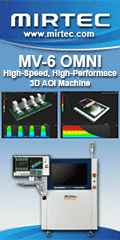
Skyscraper 3







